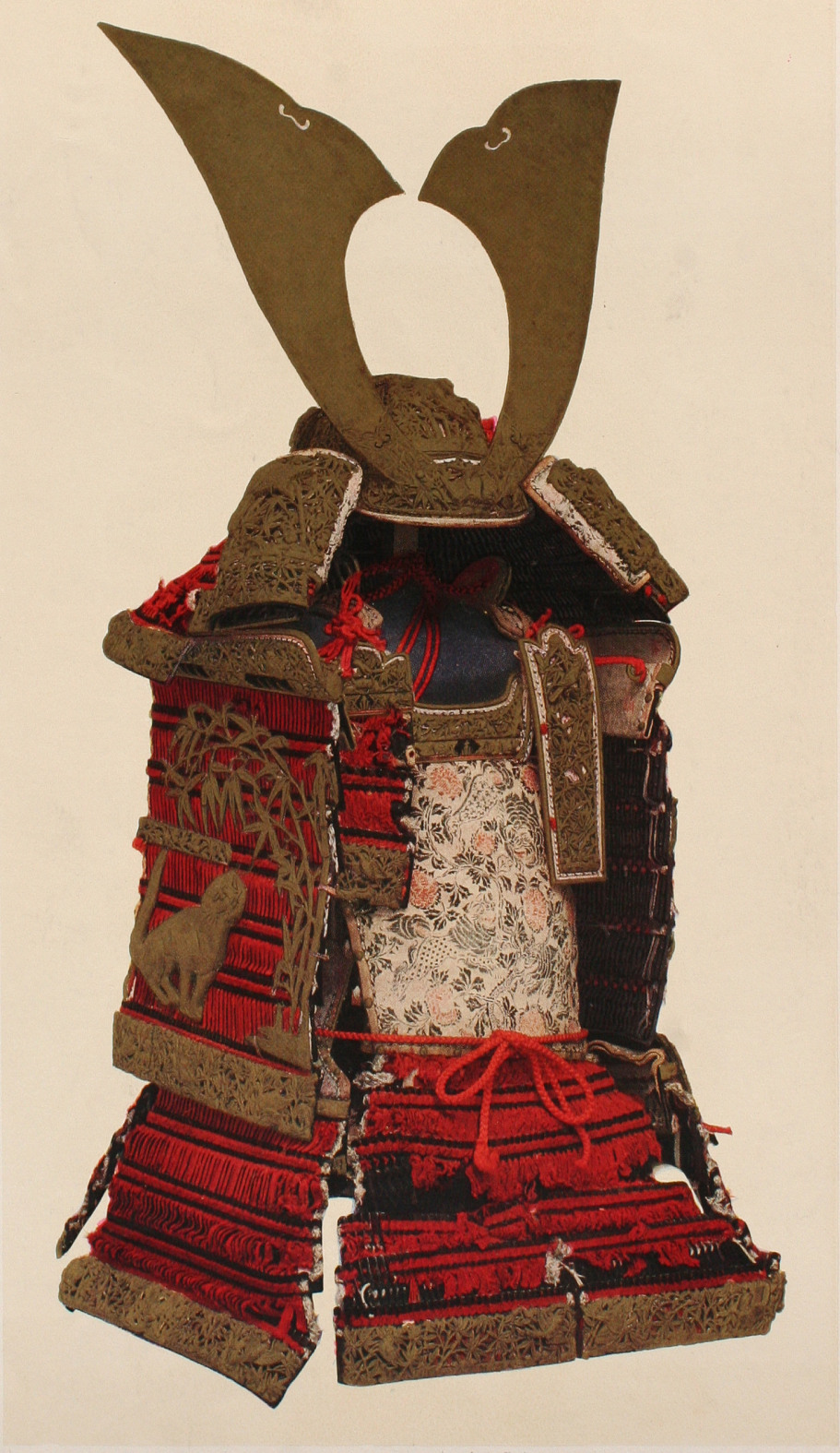|
Ňć-yoroi
The is a prominent example of early Japanese armor worn by the samurai class of feudal Japan. The term ''Ňć-yoroi'' means "great armor".(Mondadori, 1979, p. 507). History ''ŇĆ-yoroi'' first started to appear in the 10th century during the middle and late Heian period, and came into widespread use in the Genpei War around the 12th century when the call for armor was at its peak. Significant aspects of this armor were designed for cavalry archers. The box shaped ''Ňć-yoroi'' was heavy and did not allow as much movement or flexibility as its counterpart the dŇć-maru, so the armor fell out of favor in the fifteenth century when samurai shifted to mostly infantry tactics.(Ogawa, 1989). For the most part the ''Ňć-yoroi'' was a rich man's armor and not used by lower ranking samurai. The armor was mainly worn by the higher ranking samurai on horseback. The lower ranking soldiers had armor that was similar to the ''Ňć-yoroi'', but had fewer components, was lighter, and lacked the deco ... [...More Info...] [...Related Items...] OR: [Wikipedia] [Google] [Baidu] [Amazon] |
Japanese Armor
Scholars agree that Japanese armour first appeared in the 4th century, with the discovery of the cuirass and basic helmets in graves. During the Heian period (794‚Äď1185), the unique Japanese samurai armour ''Ňć-yoroi'' and '' dŇć-maru'' appeared.ŚľŹś≠£„Āģťéß„ÉĽŚ§ßťéß Costume Museum The Japanese cuirass evolved into the more familiar style of worn by the samurai known as the dou or dŇć, with the use of leather straps (nerigawa), and |
Samurai
The samurai () were members of the warrior class in Japan. They were originally provincial warriors who came from wealthy landowning families who could afford to train their men to be mounted archers. In the 8th century AD, the imperial court downsized the national army and delegated the security of the countryside to these privately trained warriors. Eventually the samurai clans grew so powerful that they became the ''de facto'' rulers of the country. In the aftermath of the Gempei War (1180-1185), Japan formally passed into military rule with the founding of the first shogunate. The status of samurai became heredity by the mid-eleventh century. By the start of the Edo period, the shogun had disbanded the warrior-monk orders and peasant conscript system, leaving the samurai as the only men in the country permitted to carry weapons at all times. Because the Edo period was a time of peace, many samurai neglected their warrior training and focused on peacetime activities such as a ... [...More Info...] [...Related Items...] OR: [Wikipedia] [Google] [Baidu] [Amazon] |
List Of National Treasures Of Japan (crafts-others)
The term "National Treasures of Japan, National Treasure" has been used in Japan to denote Cultural Properties of Japan, cultural properties since 1897, although the definition and the criteria have changed since the introduction of the term. The crafts items in the list adhere to the current definition and have been designated National Treasures according to the Law for the Protection of Cultural Properties that came into effect on June 9, 1951. The items are selected by the Ministry of Education, Culture, Sports, Science and Technology (Japan), Ministry of Education, Culture, Sports, Science and Technology based on their "especially high historical or artistic value". The list presents 132 entries from Classical to early modern Japan, spanning from the 7th century Asuka period, Asuka to the 18th century Edo period. The number of items is higher, however, since groups of related objects have been joined as single entries. The listed objects are of many types and include househol ... [...More Info...] [...Related Items...] OR: [Wikipedia] [Google] [Baidu] [Amazon] |


